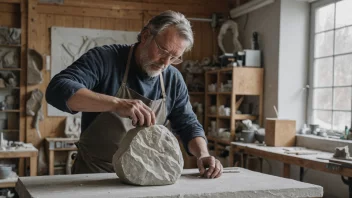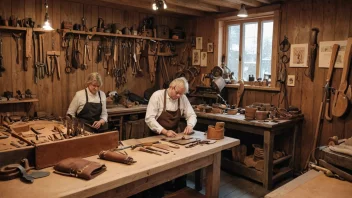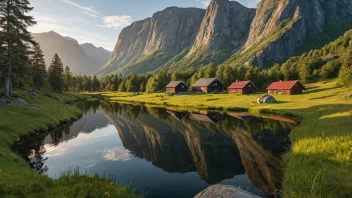Norway is a land steeped in rich traditions that have been passed down through generations, shaping the cultural identity of its people. These traditions not only reflect the history and values of communities but also play a pivotal role in fostering a sense of belonging and pride among locals. Here are five significant ways local traditions influence Norwegian identity.
1. Language and Dialects
The diversity of languages and dialects across Norway is a testament to its rich cultural heritage. Each region boasts its own unique dialect, which carries local nuances and expressions. This linguistic variety fosters a sense of community and belonging, as it connects individuals to their roots. For instance, the distinct dialects of Bergen and Oslo not only showcase the country's linguistic richness but also reflect historical influences and migrations.
2. Traditional Crafts and Artisanship
The revival of traditional crafts, such as wood carving, knitting, and weaving, has become increasingly important in contemporary Norwegian society. Local artisans dedicated to preserving these crafts infuse their work with history and cultural significance. By supporting these artisans, communities not only contribute to the preservation of their heritage but also promote sustainable practices that respect nature and resources. Engaging with these crafts helps maintain the stories and traditions that define Norwegian identity.
3. Festivals and Celebrations
Festivals in Norway often embody the essence of local traditions and are a celebration of cultural identity. Events such as the National Day on May 17th, which celebrates the signing of the constitution, showcase traditional costumes (bunad), music, and local cuisine. These gatherings create a sense of unity among citizens, reinforcing shared values and history. Additionally, local festivals often highlight regional specialties and customs, allowing communities to come together in celebration of their unique heritages.
4. Folklore and Storytelling
Norwegian folklore is rich with tales of trolls, gods, and mythical creatures that have been told for centuries. These stories are not only entertaining but also serve as moral lessons and reflections of societal values. Storytelling remains an integral part of local culture, with many communities hosting events where tales are shared, ensuring that younger generations remain connected to their roots. This oral tradition helps to preserve the cultural landscape and fosters a sense of identity among Norwegians.
5. Local Cuisine and Food Traditions
Food is a vital component of cultural identity, and Norway’s diverse culinary traditions reflect the country’s history and geography. Local ingredients, seasonal dishes, and traditional recipes play a significant role in community gatherings and celebrations. By emphasizing local produce and traditional cooking methods, Norwegians celebrate their heritage and foster a sense of pride in their culinary roots. Festivals centered around food not only bring people together but also highlight the importance of sustainability and local sourcing.
In conclusion, the local traditions of Norway are deeply interwoven with the cultural identity of its people. From language and crafts to festivals and folklore, these traditions serve as a bridge connecting the past with the present. By valuing and supporting these local practices, Norwegians continue to cultivate a rich cultural tapestry that defines their identity and strengthens community bonds.






